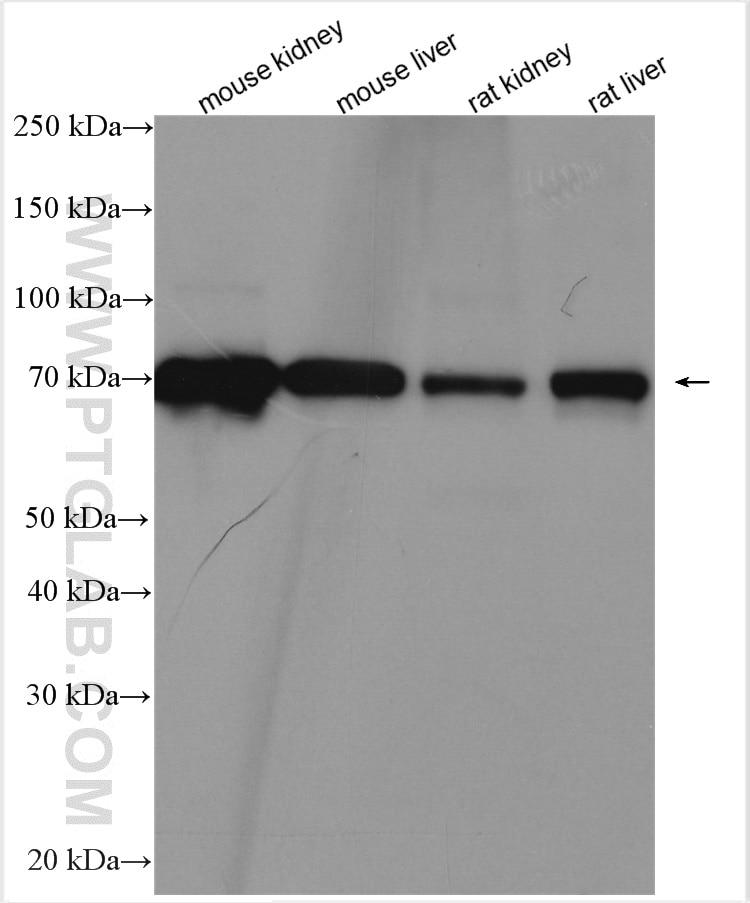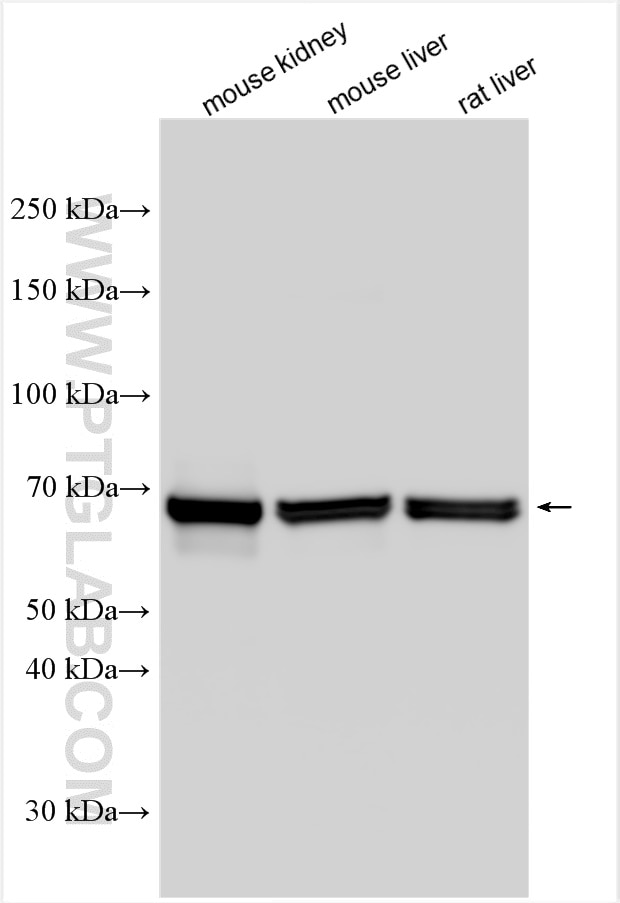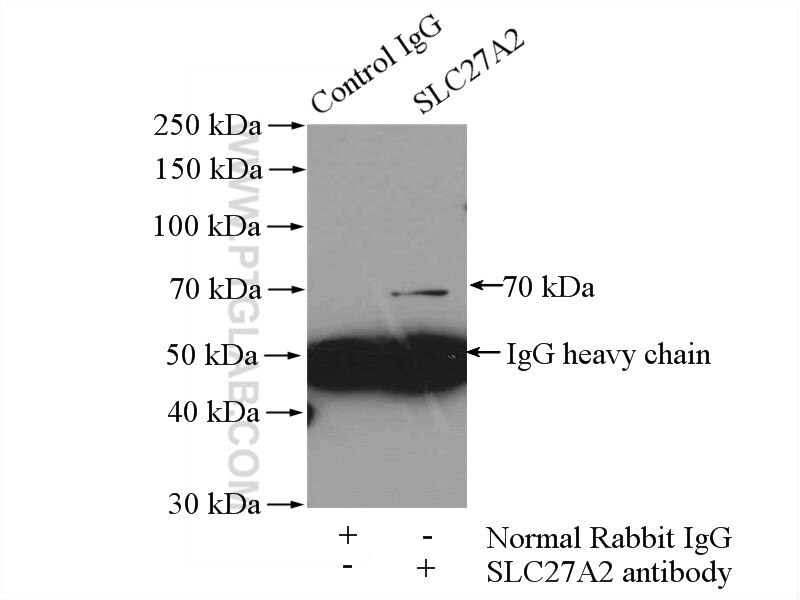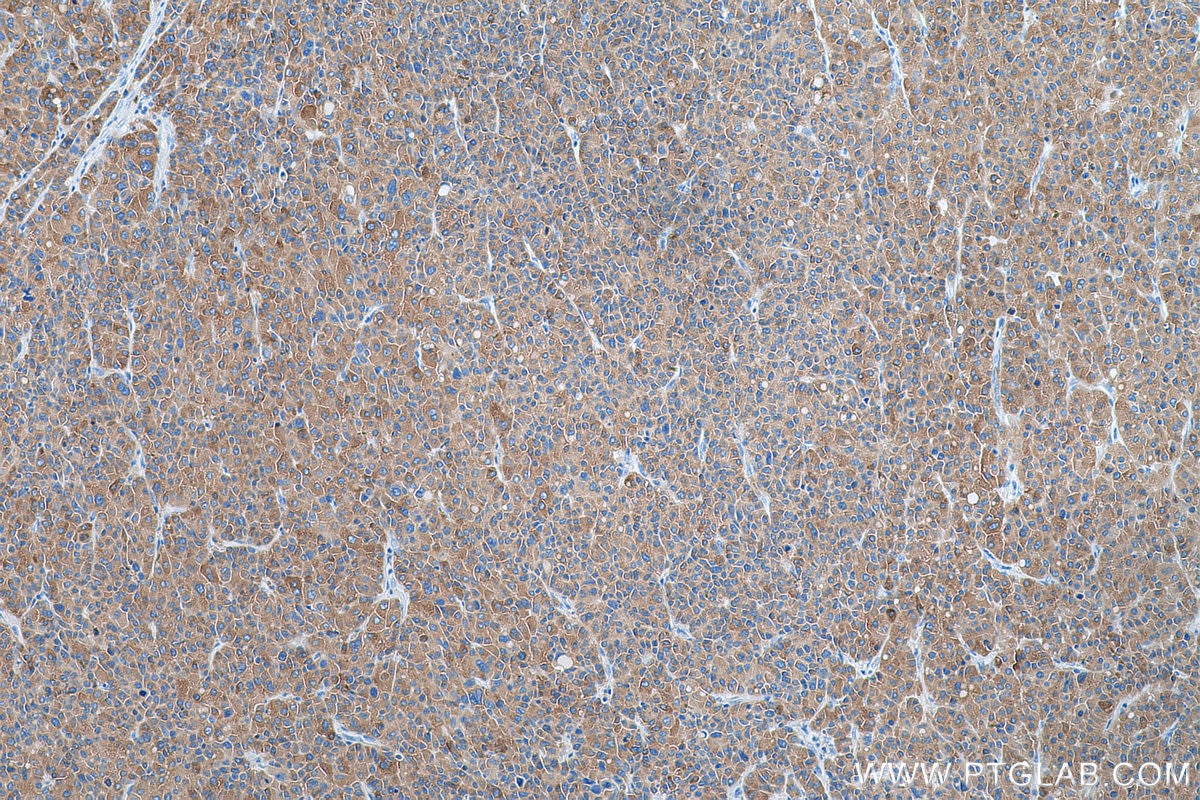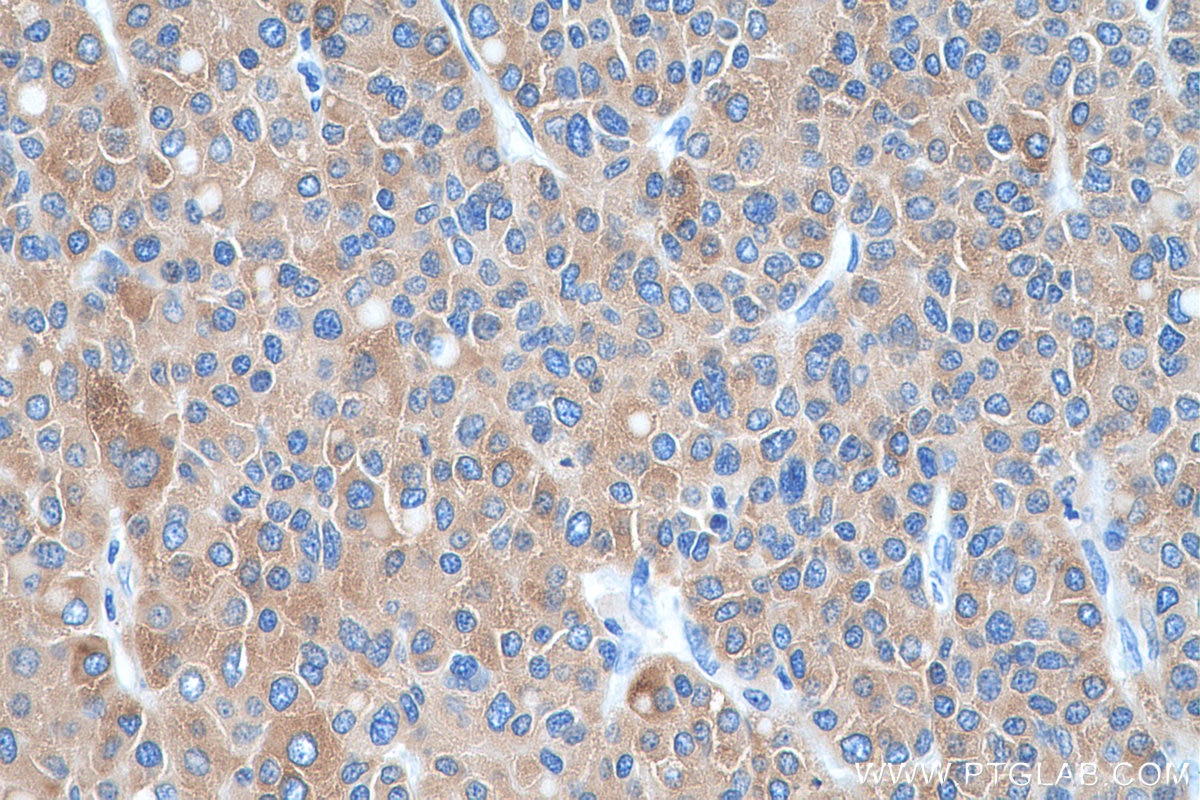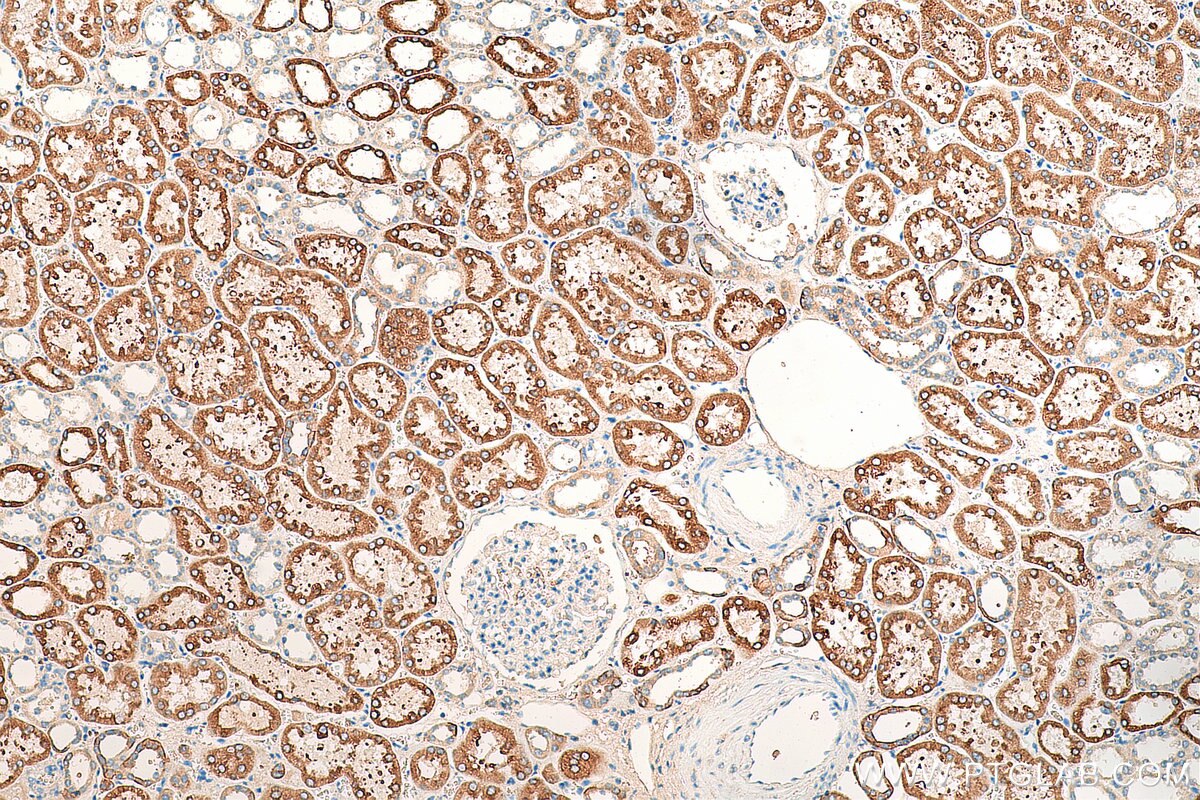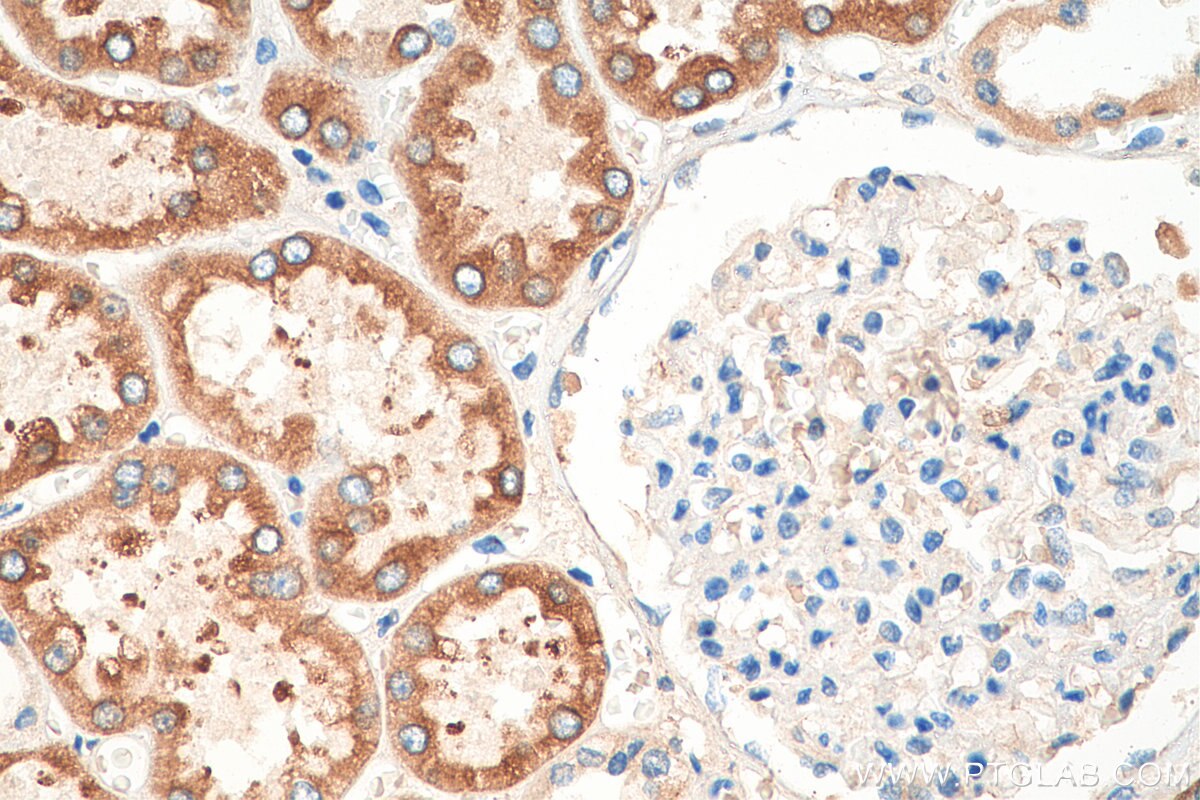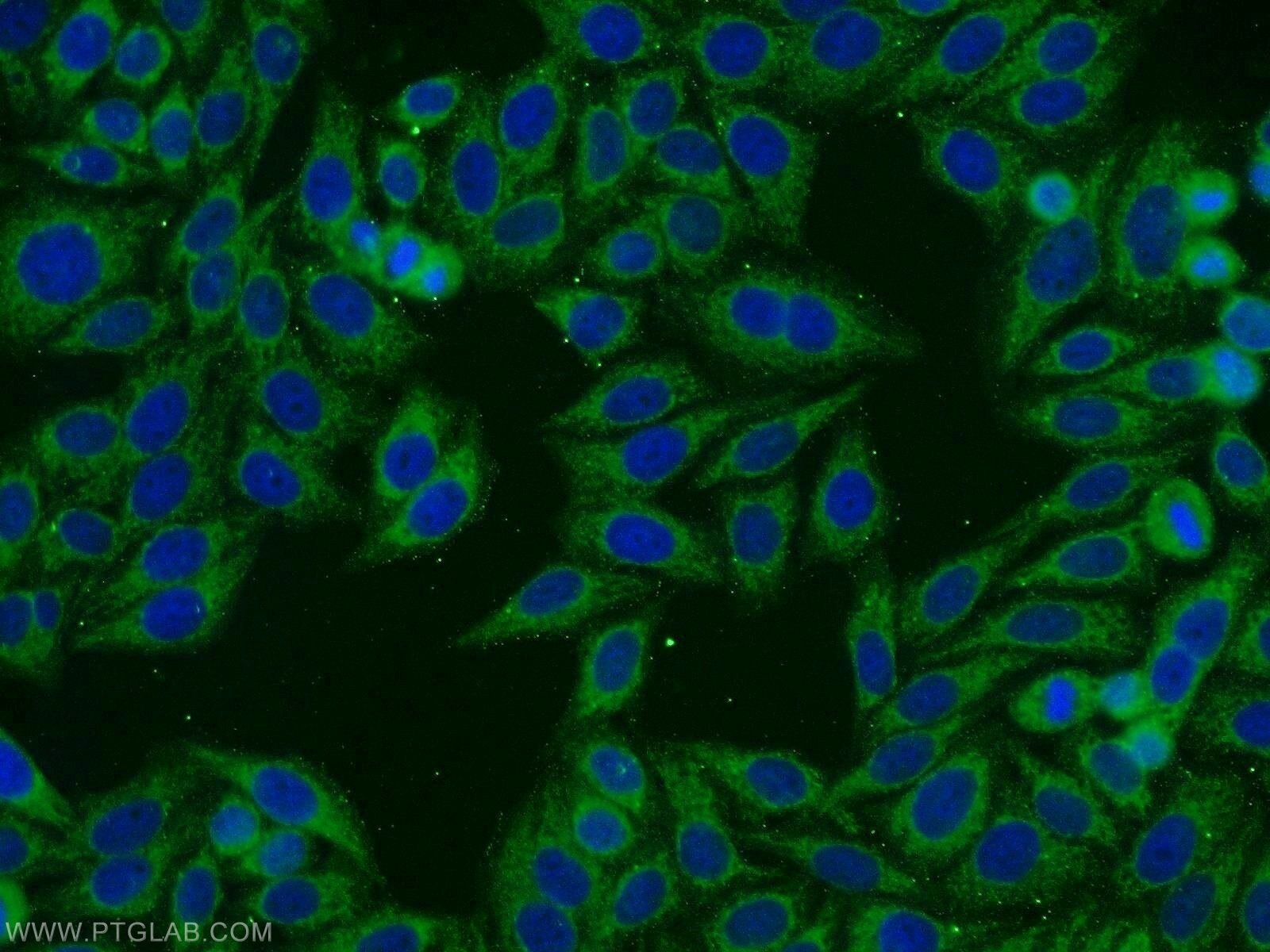- Featured Product
- KD/KO Validated
FATP2 Polyklonaler Antikörper
FATP2 Polyklonal Antikörper für IF, IHC, IP, WB, ELISA
Wirt / Isotyp
Kaninchen / IgG
Getestete Reaktivität
human, Maus, Ratte
Anwendung
WB, IP, IHC, IF, CoIP, ELISA
Konjugation
Unkonjugiert
Kat-Nr. : 14048-1-AP
Synonyme
Galerie der Validierungsdaten
Geprüfte Anwendungen
| Erfolgreiche Detektion in WB | Mausnierengewebe, Mauslebergewebe, Rattenlebergewebe |
| Erfolgreiche IP | HepG2-Zellen |
| Erfolgreiche Detektion in IHC | humanes Leberkarzinomgewebe, humanes Nierengewebe Hinweis: Antigendemaskierung mit TE-Puffer pH 9,0 empfohlen. (*) Wahlweise kann die Antigendemaskierung auch mit Citratpuffer pH 6,0 erfolgen. |
| Erfolgreiche Detektion in IF | HepG2-Zellen |
Empfohlene Verdünnung
| Anwendung | Verdünnung |
|---|---|
| Western Blot (WB) | WB : 1:2000-1:16000 |
| Immunpräzipitation (IP) | IP : 0.5-4.0 ug for 1.0-3.0 mg of total protein lysate |
| Immunhistochemie (IHC) | IHC : 1:250-1:1000 |
| Immunfluoreszenz (IF) | IF : 1:10-1:100 |
| It is recommended that this reagent should be titrated in each testing system to obtain optimal results. | |
| Sample-dependent, check data in validation data gallery | |
Veröffentlichte Anwendungen
| KD/KO | See 3 publications below |
| WB | See 28 publications below |
| IHC | See 2 publications below |
| IF | See 4 publications below |
| CoIP | See 1 publications below |
Produktinformation
14048-1-AP bindet in WB, IP, IHC, IF, CoIP, ELISA FATP2 und zeigt Reaktivität mit human, Maus, Ratten
| Getestete Reaktivität | human, Maus, Ratte |
| In Publikationen genannte Reaktivität | human, Maus, Ratte |
| Wirt / Isotyp | Kaninchen / IgG |
| Klonalität | Polyklonal |
| Typ | Antikörper |
| Immunogen | FATP2 fusion protein Ag5217 |
| Vollständiger Name | solute carrier family 27 (fatty acid transporter), member 2 |
| Berechnetes Molekulargewicht | 567 aa, 65 kDa |
| Beobachtetes Molekulargewicht | 70 kDa |
| GenBank-Zugangsnummer | BC057770 |
| Gene symbol | SLC27A2 |
| Gene ID (NCBI) | 11001 |
| Konjugation | Unkonjugiert |
| Form | Liquid |
| Reinigungsmethode | Antigen-Affinitätsreinigung |
| Lagerungspuffer | PBS mit 0.02% Natriumazid und 50% Glycerin pH 7.3. |
| Lagerungsbedingungen | Bei -20°C lagern. Nach dem Versand ein Jahr lang stabil Aliquotieren ist bei -20oC Lagerung nicht notwendig. 20ul Größen enthalten 0,1% BSA. |
Hintergrundinformationen
FATP2 is a member of the FATP family which functions in lipid and bile metabolism. It is a 70-kDa protein predominantly expressed in liver and kidney. Kidney FATP2 is localized exclusively to proximal tubule epithelial cells along the apical but not the basolateral membrane, and regulates lipoapoptosis. FATP2 is involved in metabolism-related diseases including nonalcoholic fatty liver disease (NAFLD) and type 2 diabetes mellitus (T2DM), and is a potential clinical biomarker and therapeutic target.
Protokolle
| Produktspezifische Protokolle | |
|---|---|
| WB protocol for FATP2 antibody 14048-1-AP | Protokoll herunterladen |
| IHC protocol for FATP2 antibody 14048-1-AP | Protokoll herunterladen |
| IF protocol for FATP2 antibody 14048-1-AP | Protokoll herunterladen |
| IP protocol for FATP2 antibody 14048-1-AP | Protokoll herunterladen |
| Standard-Protokolle | |
|---|---|
| Klicken Sie hier, um unsere Standardprotokolle anzuzeigen |
Publikationen
| Species | Application | Title |
|---|---|---|
Hepatology Letter to the editor: Adipose lipolysis is important for ethanol to induce fatty liver in the NIAAA murine model of chronic and binge ethanol feeding | ||
Hepatology Adipose lipolysis is important for ethanol to induce fatty liver in the National Institute on Alcohol Abuse and Alcoholism murine model of chronic and binge ethanol feeding. | ||
EMBO Rep Lin28 enhances de novo fatty acid synthesis to promote cancer progression via SREBP-1. | ||
Anal Chem Ionic Liquid-Based Extraction System for In-Depth Analysis of Membrane Protein Complexes. | ||
Food Funct Monounsaturated fatty acid-enriched olive oil exacerbates chronic alcohol-induced hepatic steatosis and liver injury in C57BL/6J mice | ||
Nephrol Dial Transplant Key enzyme in charge of ketone reabsorption of renal tubular SMCT1 may be a new target in diabetic kidney disease |
